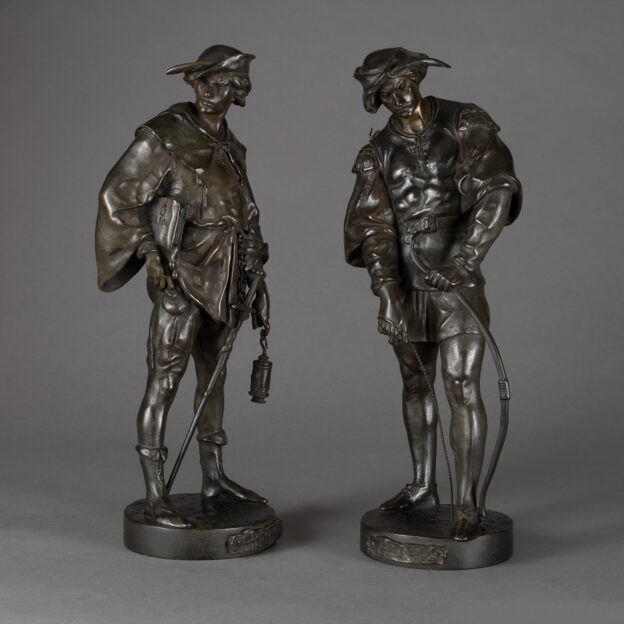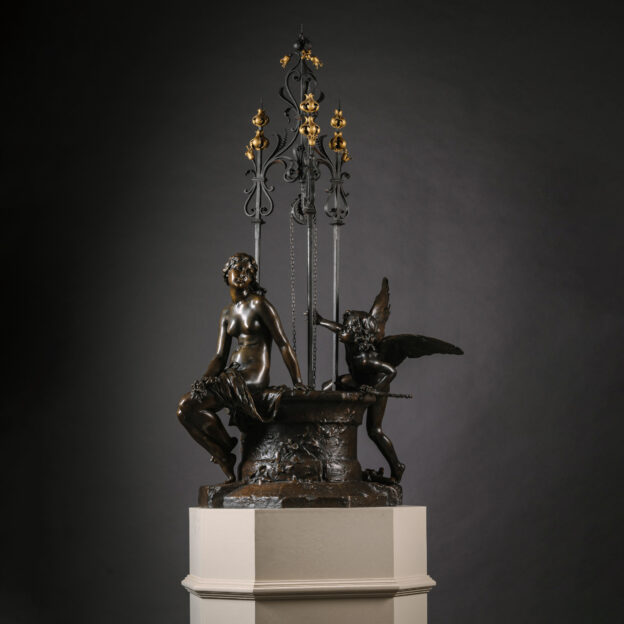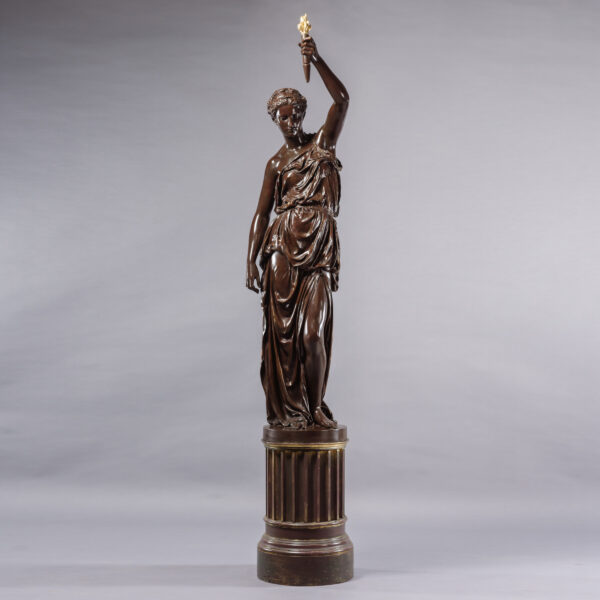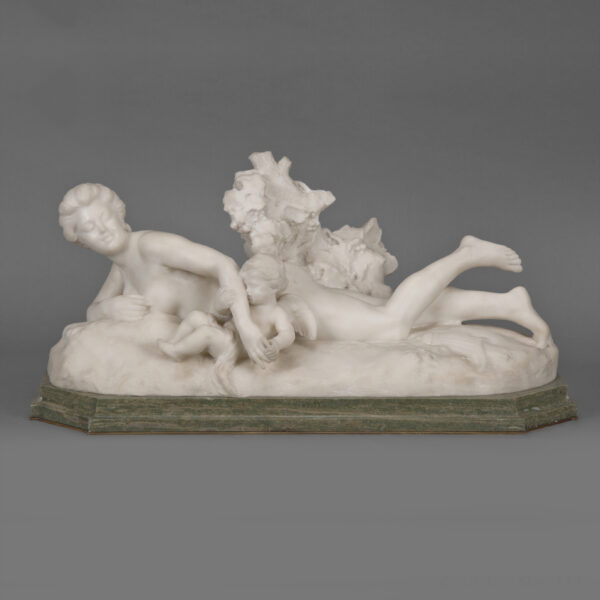Two White Statuary Marble Figures of the ‘Venus de Medici’ and the ‘Venus Italica’
£36,000
Two White Statuary Marble Figures of the ‘Venus de Medici’ and the ‘Venus Italica’. The ‘Venus de Medici’ after the antique and the ‘Venus...
Dimensions
Height: 70 cm (28 in)Width: 23 cm (10 in)
Depth: 20 cm (8 in)
Weight: 19 kg
Description
Two White Statuary Marble Figures of the ‘Venus de Medici’ and the ‘Venus Italica’.
The ‘Venus de Medici’ after the antique and the ‘Venus Italica’ after Antonio Canova. The ‘Venus de Medici’ on an integrally carved shaped base with a putto riding a dolphin by her left leg; restorations to hands. The ‘Venus Italica’ semi-robed and on an integrally carved circular base.
Italy, Circa 1900.
The ‘Venus de Medici’ is shown chaste, instinctively covering herself as if observed. The original subject enjoyed great popularity in the Hellenistic and Roman periods and was the object of several reinterpretations. So titled because it was at the Medici Villa in Rome by the mid-16th century, it was sent to Florence in 1677 and positioned in the Tribuna of the Uffizi where it became a high point of the Grand Tour, considered one of the finest classical statues to have survived and shrouded by a sort of sacred respect by antiquarians.
The ‘Venus Italica’ by the Italian sculptor Antonio Canova was commissioned by Napoléon Bonaparte and completed in 1802. It was intended to replace the ‘Venus de Medici’, which had been seized, taken to France and placed in the Louvre in 1802. After Napoleon’s fall it arrived back in Florence on 27 December 1815. Canova’s depiction of the vulnerability of Venus is no less compelling, and is considered a masterpiece of artistic conception.
United in Florence, the ‘Venus de Medici’ can be seen in the Tribuna of the Uffizi Gallery and the ‘Venus Italica’ in the Room of Venus of the Palatine Gallery at the Pitti Palace.
The present examples are reductions after the lifesize originals, and their pairing is testament to the intertwined history of these most idealised portraits of beauty. The present statues are attributed to a Florentine workshop, such as those established by the gifted sculptors Pietro Bazzanti and Pasquale Romanelli, who received commissions for contemporary and ‘after the antique’ sculpture from visiting Grand Tourists.
Date
Circa 1900
Origin
Italy
Medium
White Marble

















 Print
Print


